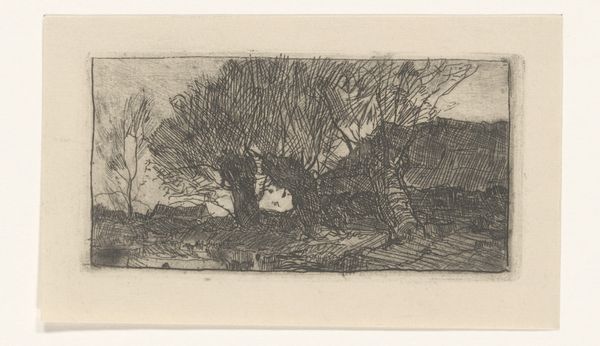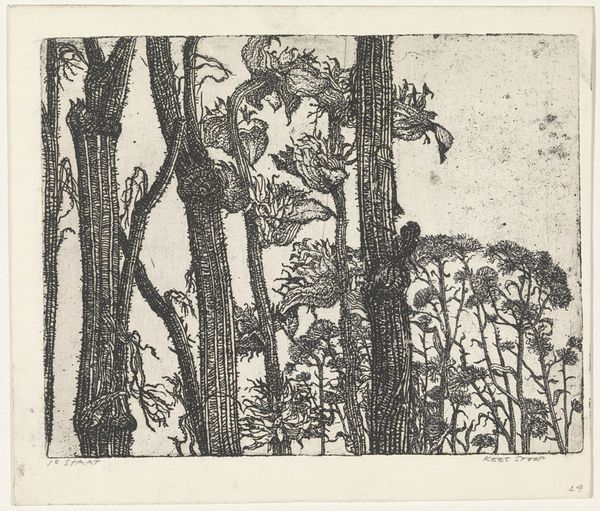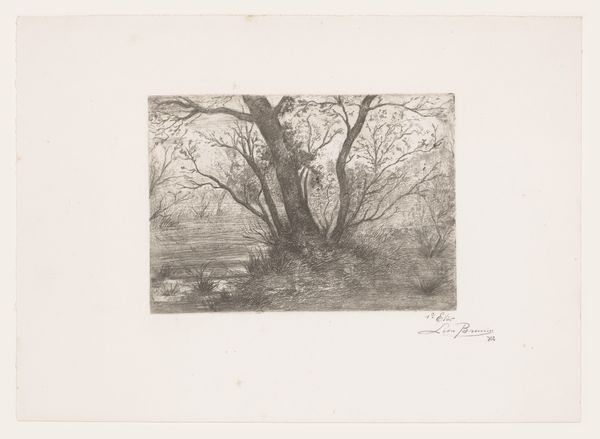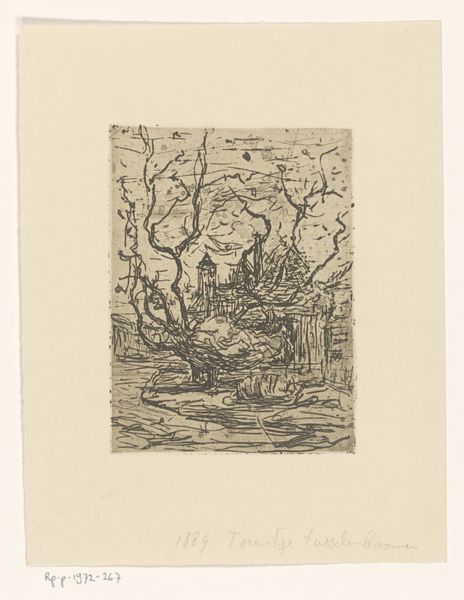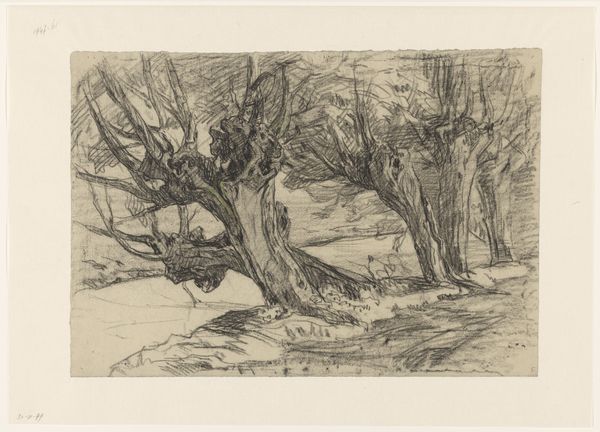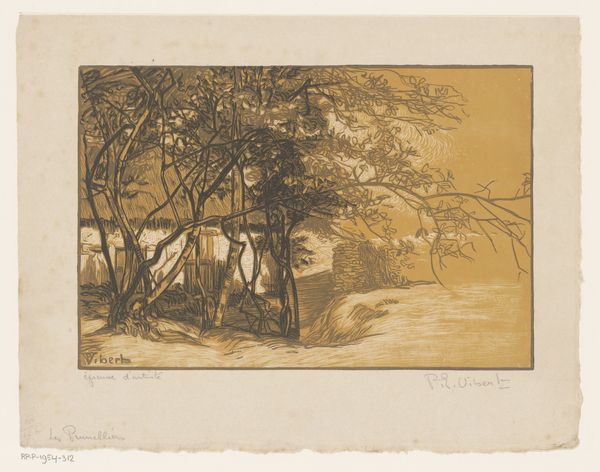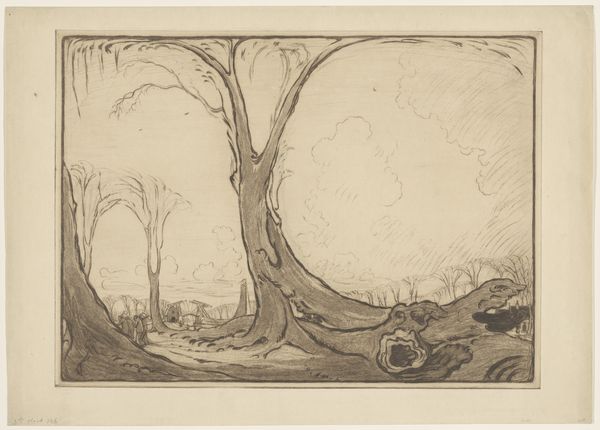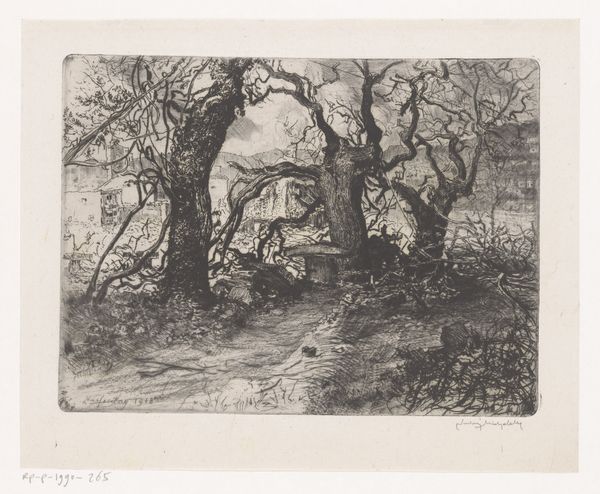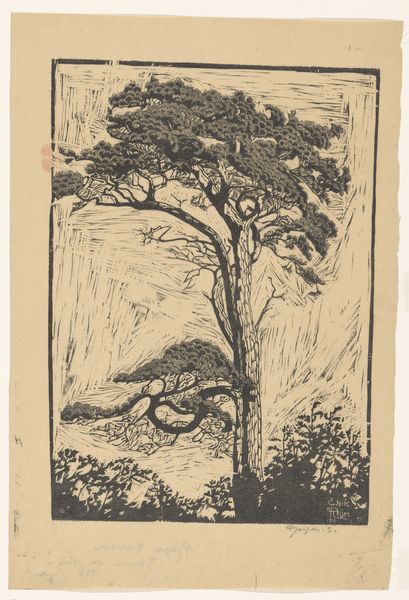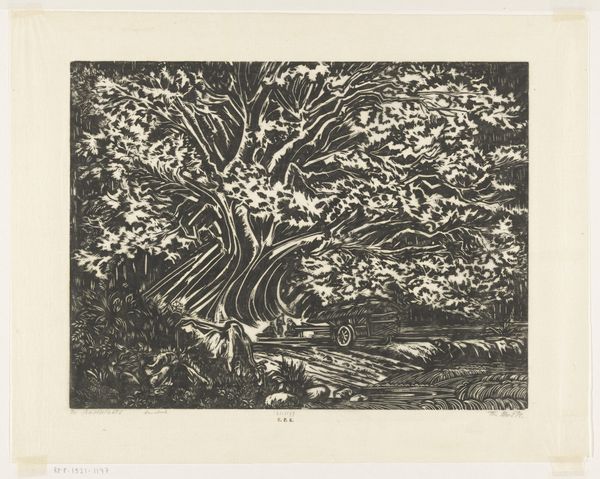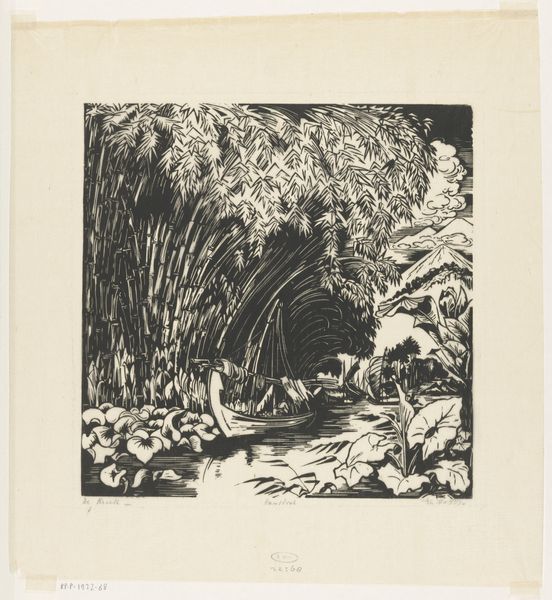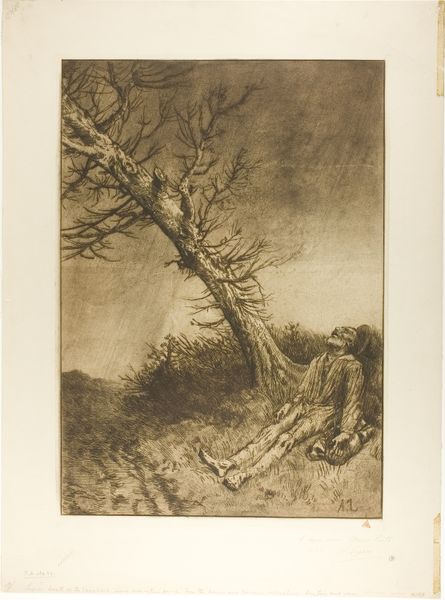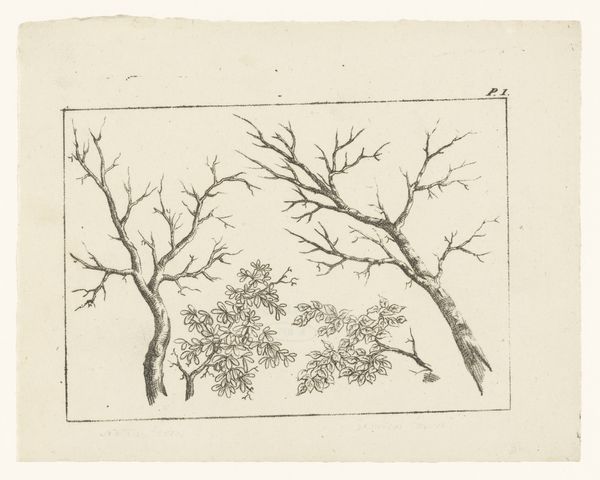
drawing, paper, ink, pen
#
drawing
#
pencil sketch
#
landscape
#
bird
#
figuration
#
paper
#
ink
#
ink drawing experimentation
#
pen-ink sketch
#
sketchbook drawing
#
pen
Dimensions: height 105 mm, width 137 mm
Copyright: Rijks Museum: Open Domain
Curator: Henri Verstijnen created "Twee vogels op een nest," or "Two Birds on a Nest," sometime between 1892 and 1940. It's a drawing made with pen, ink, and pencil on paper. I find it remarkably intimate. Editor: It does feel that way. The first impression is how quiet it is. Black and white drawings often have that effect, but also the composition, with these birds tucked into their nest beneath the tree—it suggests a hushed domestic scene. Curator: Considering Verstijnen’s artistic milieu, one can view this through the lens of evolving representations of nature and domesticity at the time. The late 19th and early 20th centuries saw significant shifts in artistic approaches to depicting both. I'm curious to consider its position relative to the social functions ascribed to such imagery. Editor: Yes, how does the sketch function socially? Well, birds, nesting… it certainly evokes motherhood and protection, family structures. Verstijnen gives the viewer the quiet moment within a family, and, if we interpret the stylized tree overhead as protective, the safety of home. Yet there’s something unsettling, almost stark about the solid black tree. Curator: Absolutely, that use of contrast draws our attention, and while themes of motherhood and domesticity resonate, there’s a deeper level. The very use of birds points to broader historical contexts. Consider the symbolic role of birds in literature, mythology, folklore, all laden with diverse meanings tied to freedom, omen, or even vulnerability. The formal execution and use of ink point to artistic traditions linked with capturing transient moments. Editor: And speaking to its materiality—it’s just ink and paper—perhaps speaks to art's democratization. Here we have the possibility of depicting love and care between partners but in an inexpensive way and that’s important from the perspective of accessing these depictions across class boundaries. There’s nothing precious here—rather an accessible portrayal of natural devotion, but is this idealizing a specific model of relationships? Curator: That question itself—about who is being represented, who has access to that representation—is vital. Thank you for guiding our reflection on the work's broader impact. Editor: I, in turn, appreciate your providing a deeper art historical context; now when I view Verstijnen's drawing, I will bring greater cultural awareness and insight.
Comments
No comments
Be the first to comment and join the conversation on the ultimate creative platform.
